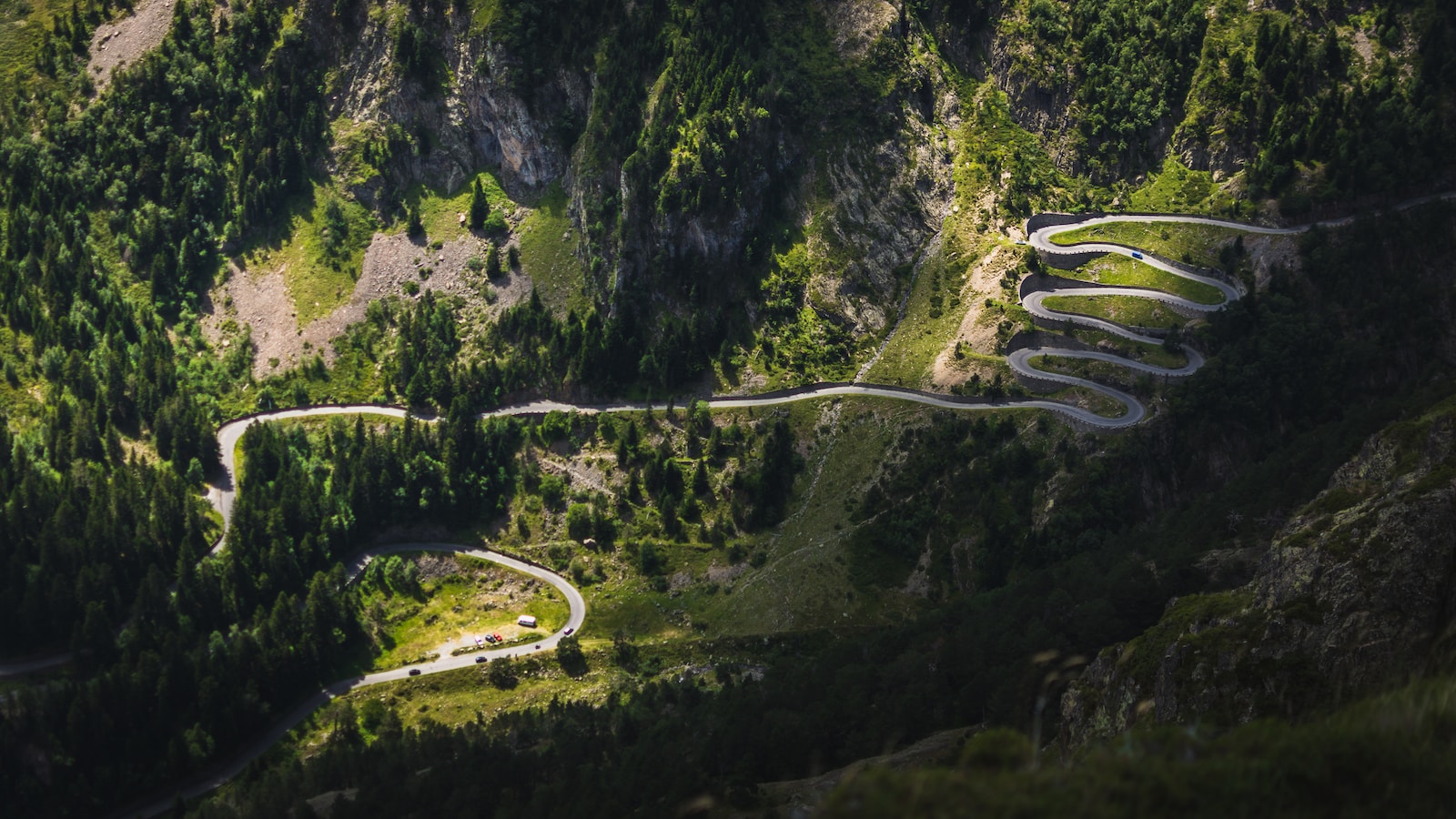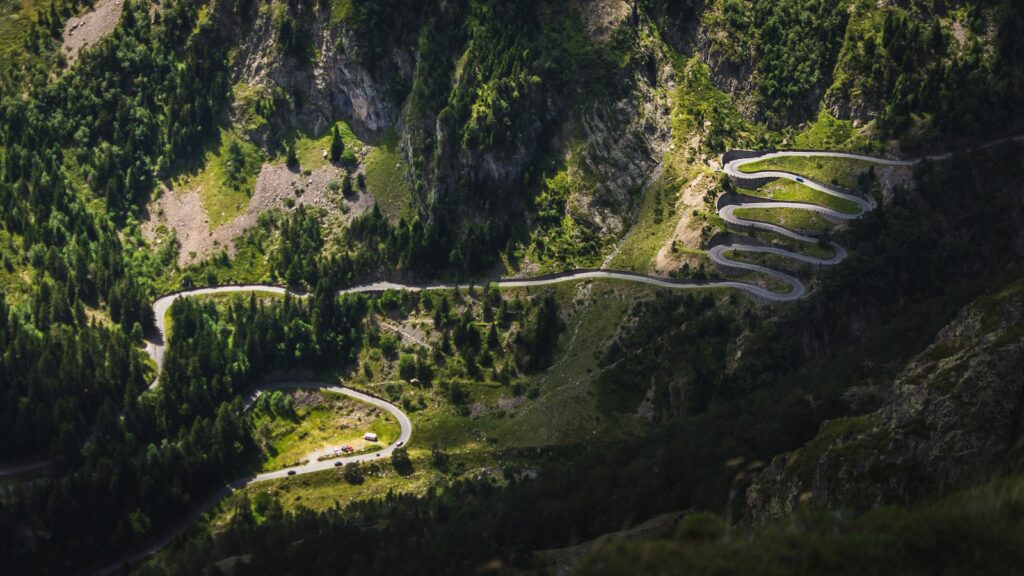
Which mountain range makes the northeastern border of Spain? – Pyrenees. Stretching across the northeast border, these towering peaks are a testament to nature’s grandeur. With their rich geological history and diverse flora and fauna, the Pyrenees have long been a source of inspiration and wonder. Join us as we explore this breathtaking mountain range’s cultural significance, outdoor activities, and tourism allure.
Key Takeaways
- The Pyrenees mountain range makes the northeastern border of Spain.
- It stretches for about 430 kilometers and serves as a natural barrier protecting Spain from invasions.
- The Pyrenees significantly influence the cultural identities of Spain and France.
- The region offers a wide range of outdoor activities and tourism opportunities.
The Geographical Location of the Pyrenees
We are currently discussing the significance of the geographical location of the Pyrenees. This mountain range is a natural border between Spain and France in southwestern Europe. Stretching for about 430 kilometers, the Pyrenees provide a stunning backdrop to the countries they separate. As a result, they have played a crucial role in shaping the region’s history, culture, and even climate.
Table of Contents
One of the critical aspects of the Pyrenees’ geographical location is their strategic value. Throughout history, this mountain range has served as a natural barrier, protecting Spain and France from invasions and providing a sense of security. The rugged terrain and the towering peaks make it difficult for armies to cross, thus safeguarding the territories on either side.
Moreover, the Pyrenees have influenced the cultural identities of both Spain and France. The mountain range has acted as a physical boundary, contributing to the developing of different languages, traditions, and customs on either side. This has resulted in a rich diversity of cultures and a unique blend of influences in the regions surrounding the Pyrenees.
Additionally, the Pyrenees’ geographical location significantly impacts the climate of the surrounding areas. The mountains act as a natural barrier to weather systems, causing a stark contrast between the Mediterranean climate on the southern side and the oceanic climate on the northern side of the range. This temperature variation has shaped the region’s landscapes, vegetation, and agricultural practices.
The Formation and Geological History of the Pyrenees
Our understanding of the Pyrenees’ formation and geological history constantly evolves as new research and discoveries shed light on the processes that shaped this magnificent mountain range. Over the years, scientists have pieced together a fascinating story about how the Pyrenees came to be.
According to current research, the Pyrenees formed around 55 million years ago during the collision of the Iberian Peninsula and the Eurasian Plate. This collision caused the Earth’s crust to buckle and fold, giving rise to the towering peaks we see today. The process of mountain building, known as orogeny, continued for millions of years, resulting in the complex geological structures that characterize the Pyrenees.
Geological studies have also revealed evidence of ancient oceans that once covered where the Pyrenees now stand. Fossils of marine organisms and sedimentary rocks found in the region provide valuable insights into the past environments and the tectonic forces at play during the mountain range formation.
Furthermore, ongoing research is helping us understand the dynamic nature of the Pyrenees. Scientists are using advanced techniques such as seismic imaging and GPS monitoring to study the continuing tectonic activity in the region. These studies provide valuable information about the forces that continue to shape the Pyrenees and help us better understand the geological processes involved.
The Flora and Fauna of the Pyrenees
In the Pyrenees, we can observe diverse flora and fauna, from lush forests to majestic wildlife. The unique geographical location of the Pyrenees, spanning across the northeastern border of Spain and the southwestern border of France, provides a rich and varied ecosystem. As we explore the mountains, we are greeted by abundant plant life. Thick forests of beech, oak, and pine trees blanket the slopes, creating a picturesque landscape. The lower altitudes are adorned with colorful wildflowers, including orchids and lilies, which add a vibrant touch to the scenery.
Moving higher up, we encounter alpine meadows with a carpet of grasses and herbs dotted with delicate edelweiss flowers. The Pyrenees are also home to a wide range of wildlife. Ibex, chamois, and marmots can be spotted gracefully navigating the rocky terrain. The elusive brown bear, a symbol of the region’s wilderness, finds refuge in the dense forests. Raptors, such as the golden eagle and the peregrine falcon, soar through the skies, showcasing their impressive hunting skills. In the Pyrenees, nature lovers and wildlife enthusiasts are treated to a remarkable display of biodiversity.
The Cultural Significance of the Pyrenees
As we delve into the rich cultural heritage of the Pyrenees, we discover the intricate tapestry of traditions and customs that have shaped the region. The Pyrenees, a majestic mountain range, have been home to diverse communities for centuries, each with its unique way of life. Here are some fascinating aspects of the cultural significance of the Pyrenees:
- Language: The region is known for its linguistic diversity, with various languages spoken, including Catalan, Basque, and Aranese, alongside Spanish and French.
- Folklore: The Pyrenees are steeped in folklore, with stories of mythical creatures like the Basajaun, a forest spirit, and the Olentzero, a Christmas figure.
- Architecture: The traditional houses in the Pyrenees showcase distinct architectural styles, with stone walls and sloping roofs blending harmoniously with the natural environment.
- Gastronomy: The cuisine of the Pyrenees reflects the region’s agricultural heritage, with dishes like escudella i carn d’olla, a hearty meat and vegetable stew, and trinxat, a savory cabbage and potato dish.
- Festivals: The Pyrenees come alive during festivals, such as the Carnival of Bielsa and the Festival of San Fermin in Pamplona, where locals and visitors celebrate with music, dance, and traditional costumes.
Exploring the cultural significance of the Pyrenees allows us to appreciate the vibrant traditions and customs that have shaped this unique and captivating region.

Outdoor Activities and Tourism in the Pyrenees
Let’s hike through the stunning Pyrenees and experience the thrill of outdoor activities and tourism in this breathtaking mountain range. The Pyrenees, stretching over 430 kilometers from the Atlantic Ocean to the Mediterranean Sea, offer a wide range of opportunities for adventure and exploration. Whether you’re a seasoned hiker or a novice looking for a new challenge, there are trails for every level of experience. The Pyrenees provide a stunning backdrop for outdoor enthusiasts, from the lush valleys to the snow-capped peaks.
One of the most popular activities in the Pyrenees is hiking. With its diverse landscapes and well-marked trails, it’s no wonder that hikers flock to this region. From leisurely walks to challenging multi-day treks, there is something for everyone. The GR10 and GR11 trails, spanning the length of the Pyrenees, offer breathtaking views and the opportunity to explore picturesque villages.
In addition to hiking, the Pyrenees also offer a range of other outdoor activities. Mountain biking, rock climbing, and paragliding are thrilling adventures awaiting visitors. For those seeking a more relaxed experience, there are also opportunities for fishing, birdwatching, and even hot air balloon rides.
Tourism in the Pyrenees is booming, with visitors worldwide flocking to this natural wonderland. From cozy mountain cabins to luxury resorts, a wide range of accommodation options suit every taste and budget. Local cuisine, with its emphasis on fresh, organic ingredients, is a highlight of any visit to the Pyrenees. From hearty stews to delicate pastries, there is something to satisfy every palate.
Frequently Asked Questions
What Is the Average Temperature in the Pyrenees?
The average temperature in the Pyrenees varies depending on the season but generally ranges from mild to calm. We enjoy exploring the mountains and experiencing the different climates they offer.
Are There Any Endangered Species in the Pyrenees?
Yes, there are several endangered species in the Pyrenees. The conservation efforts in the region aim to protect these species and their habitats, ensuring their survival for future generations.
What Are the Main Economic Activities in the Pyrenees?
In the Pyrenees, our main economic activities include tourism, agriculture, and forestry. These industries contribute to the region’s prosperity and offer breathtaking landscapes, fertile lands, and abundant natural resources.
How Long Is the Pyrenees Mountain Range?
The Pyrenees mountain range stretches approximately 491 kilometers in length. It is a natural border between Spain and France, providing breathtaking landscapes and opportunities for outdoor activities like hiking and skiing.
Are There Any Major Cities Located in the Pyrenees?
Yes, there are significant cities nestled in the breathtaking Pyrenees. They offer a unique blend of scenic beauty and urban charm, making them perfect destinations for adventure seekers and culture enthusiasts.




Comments (1)
Kartersays:
04/10/2023 at 2:32 pmPyrenees!